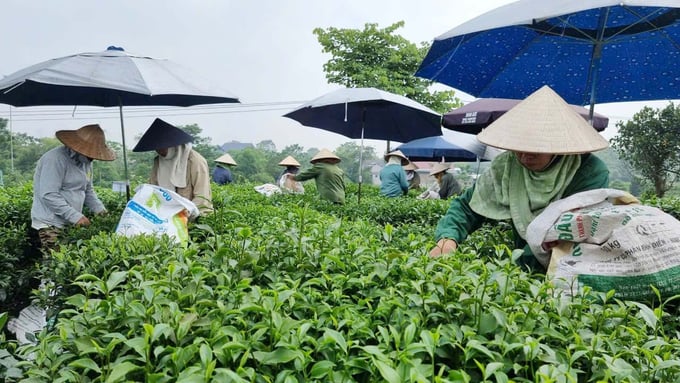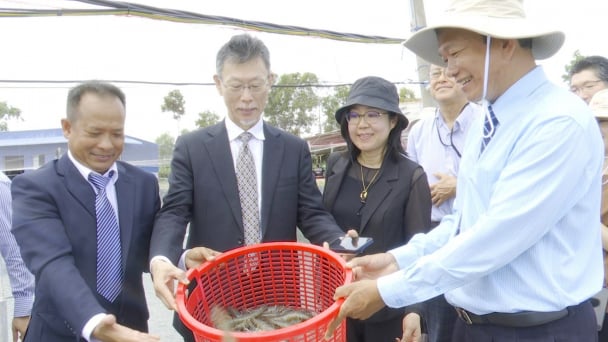June 17, 2025 | 08:19 GMT +7
June 17, 2025 | 08:19 GMT +7
Hotline: 0913.378.918
June 17, 2025 | 08:19 GMT +7
Hotline: 0913.378.918

According to the Agency of Foreign Trade (Ministry of Industry and Trade) and data from the General Department of Customs, Vietnam exported nearly 12.7 thousand tons of tea in November 2024, generating a total revenue of nearly 23 million USD. Consequently, this marks an increase of 2.6% in volume and 2.2% in value compared to the corresponding period in 2023.
The average export price of tea in November 2024 was 1,793 USD per ton, which is a decreaes of 0.4% from November 2023.
Over the first 11 months of 2024, Vietnam's tea exports reached nearly 133 thousand tons and generated approximately 235 million USD in revenue. This is an increase of 25.4% in volume and 26.9% in value compared to the corresponding period in 2023.
The average export price of tea over the 11-month period was 1,765 USD per ton, which is an increase of 1.3% compared to the corresponding period in 2023.
During this time frame, tea exports to major markets saw considerable growth. Notably, exports to Pakistan increased by 24.7% in volume and 34.2% in value; exports to Taiwan increased by 3% in volume and 6.2% in value; exports to China increased by 177.4% in volume and 85.2% in value; exports to Indonesia increased by 47.9% in volume and 53.9% in value.
Conversely, tea exports to Iraq experienced a sharp decline, falling by 44.8% in volume and 41.8% in value.
According to a report from the Department of Crop Production (Ministry of Agriculture and Rural Development), Vietnam exported approximately 121 thousand tons of tea in 2023, generating a total revenue of nearly 211 million USD. Accordingly, this represented a decrease of 16.9% in volume and 10.9% in value compared to the corresponding period in 2022.
Projections indicate that by 2030, Vietnam’s tea export volume will reach approximately 136.5 thousand tons, with an average annual growth rate of 0.82%. Furthermore, exports will account for nearly 80% of Vietnam's total tea yield. Vietnam's main tea export markets will continue to consist of Pakistan, China, Russia, and Indonesia, with a shift toward high-quality tea products targeting the EU market.
Translated by Nguyen Hai Long
![Turning wind and rain into action: [4] Bringing climate bulletins to remote and isolated areas](https://t.ex-cdn.com/nongnghiepmoitruong.vn/608w/files/linhnhp/2025/06/14/1152-z6704423696987_15fd32ffc26d590d204d520c9dac6786-nongnghiep-151141.jpg)
(VAN) The Vietnam Agriculture and Nature Newspaper interviewed Mr. Vu Thai Truong, Acting Head of Climate Change and Environment at UNDP Vietnam, to gain deeper insight into how climate bulletins are delivered to farmers.

(VAN) In Tien Giang, a high-tech shrimp farm has developed a distinctive energy-saving farming model that has yielded promising results.
![Turning wind and rain into action: [3] 300.000 farmers benefit from agro-climatic bulletins](https://t.ex-cdn.com/nongnghiepmoitruong.vn/608w/files/news/2025/06/12/e5a48259d6a262fc3bb3-nongnghiep-125122.jpg)
(VAN) The agro-climatic bulletin has become a valuable tool for farmers in the Mekong Delta. After more than five years of implementation, the initiative is gradually being expanded nationwide.
![Turning wind and rain into action: [2] Providing forecasts to the people](https://t.ex-cdn.com/nongnghiepmoitruong.vn/608w/files/news/2025/06/12/e5a48259d6a262fc3bb3-nongnghiep-103927.jpg)
(VAN) In addition to improving the quality of hydrometeorological forecasts, putting forecast bulletins into practical use is crucial for production and disaster prevention.

(VAN) Blue carbon is receiving attention for its rapid absorption capacity and vast potential. It represents a promising nature-based solution to respond to climate change.
/2025/06/11/3507-1-161904_583.jpg)
(VAN) Seagrass beds and coral reefs serve as 'cradles' that nurture life in the ocean depths, creating rich aquatic resources in Vietnamese waters.
![Turning wind and rain into action: [1] Forecasting for farmers](https://t.ex-cdn.com/nongnghiepmoitruong.vn/608w/files/news/2025/06/11/e5a48259d6a262fc3bb3-nongnghiep-111919.jpg)
(VAN) Weather is no longer just a matter of fate. Forecasts have now become an essential companion for farmers in every crop season.